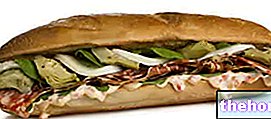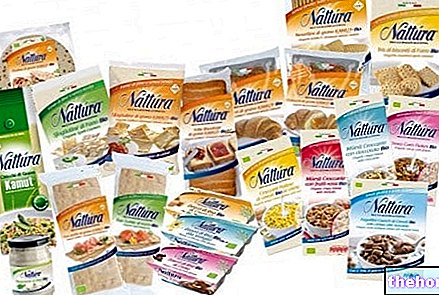General and Definition
Fried potatoes are foods of plant origin based on tubers of the species Solanum tuberosum, suitably hulled, cut into small pieces and cooked in a boiling food fat (usually a vegetable oil, more rarely an animal fat).

Fried potatoes are one of the so-called fast foods. Furthermore, they fully fall into the junk food category; this rather derogatory classification is justified by the nutritional characteristics and the nutritional role that fried potatoes play in the Western diet; below we will understand better why.
Fried potatoes should be part of the side dish, even if in fact a portion (200-250g) meets 1/4 or 1/5 of the total energy required by an adult organism, so roughly double or triple compared to a side dish. of vegetables.
The french fries in bags (like chips) are instead part of the snack range and are used above all in snacks. Compared to fresh fried ones, they are even more caloric and a portion (30g) has about 50% more of the energy required. for a secondary snack (estimated on a 2000kcal / day diet).
Nutritional Characteristics
As anticipated, all types of fried potatoes should be considered "junk food".
This statement does not depend so much on the caloric excess of these foods (an aspect that could easily be compensated for by smaller portions), as on the chemical profile and the levels of contamination.
All fried potatoes are foods with a high energy level, with a prevalence of carbohydrates for fresh ones and lipids for those in bags, followed by proteins. The fries in the bag are much more caloric, because the portion of fat is greater and the portion of water is lower.
The quality of the fatty acids depends above all on the ingredient used for frying. It is therefore essential to specify that the trend of restaurateurs and food industries provides for the choice of the cheapest product with the greatest resistance to high temperatures; usually, that of palm or palm kernel is preferred. More rarely (and certainly at a higher cost) it is possible to find fresh potatoes fried in peanut oil or extra virgin olive oil. Normally, both fresh fried potatoes and those in bags are characterized by a prevalence of saturated fatty acids and by the significant presence of those in trans conformation.
The carbohydrates of fresh fries and those in bags are almost exclusively of the complex type, ie "starch". Proteins, on the other hand, tend to have a medium biological value.
If not cooked in animal fats, fried potatoes do not contain cholesterol and the amount of dietary fiber seems satisfactory.
From a saline point of view, both types of French fries show a good level of potassium and an appreciable (but not high) amount of iron. For fresh fried potatoes without added salt, the sodium intake is normal; on the contrary, those in bags have an excessive dose. As regards vitamins, a good concentration of ascorbic acid (vitamin C) and thiamine is observed. (vit B1); for the fries in the bag even the niacin (vit PP) does not disappoint.
NB. In packaged fries all the nutrients, including lipids and calories, are more concentrated due to the lack of water in the food.
Perfect French Fries - All the Secrets to Frying Them at Home
Problems with playing the video? Reload the video from youtube.
- Go to the Video Page
- Go to the Video Recipes Section
- Watch the video on youtube
Fried potatoes are poorly digestible, therefore unsuitable for food against gastritis, ulcers, gastro-esophageal reflux and some impairments of the gallbladder; however, due to certain residues of the Maillard reaction, fried potatoes can increase the risk of certain diseases of the stomach and intestines. In the next paragraph we will understand better why.
Even evaluating the nutritional parameters only, it is immediately evident that any fried potato is not a suitable food for the nutrition of the overweight subject. Moreover, if cooked in vegetable oil with a high percentage of saturated fats (bi-fractionated, hydrogenated, etc.), or in animal fat (beef tallow or lard), they must absolutely not be part of the diet of those suffering from hypercholesterolemia. glycemic load, fried potatoes should also be avoided by those suffering from hyperglycemia (or overt type 2 diabetes mellitus) and hypertriglyceridemia. Those in bags, due to the excess sodium, should be eliminated from the diet for hypertension.
Ultimately, fried potatoes are completely unsuitable for the clinical nutrition of metabolic diseases.
All fried potatoes can represent a vegetarian or vegan food (except for the use of lard or beef tallow), and have no contraindications for gluten and lactose intolerance.
The average portion of fresh fried potatoes is about 100-150g (190-280kcal); of those in bags about 15-30g (75-150g).




























